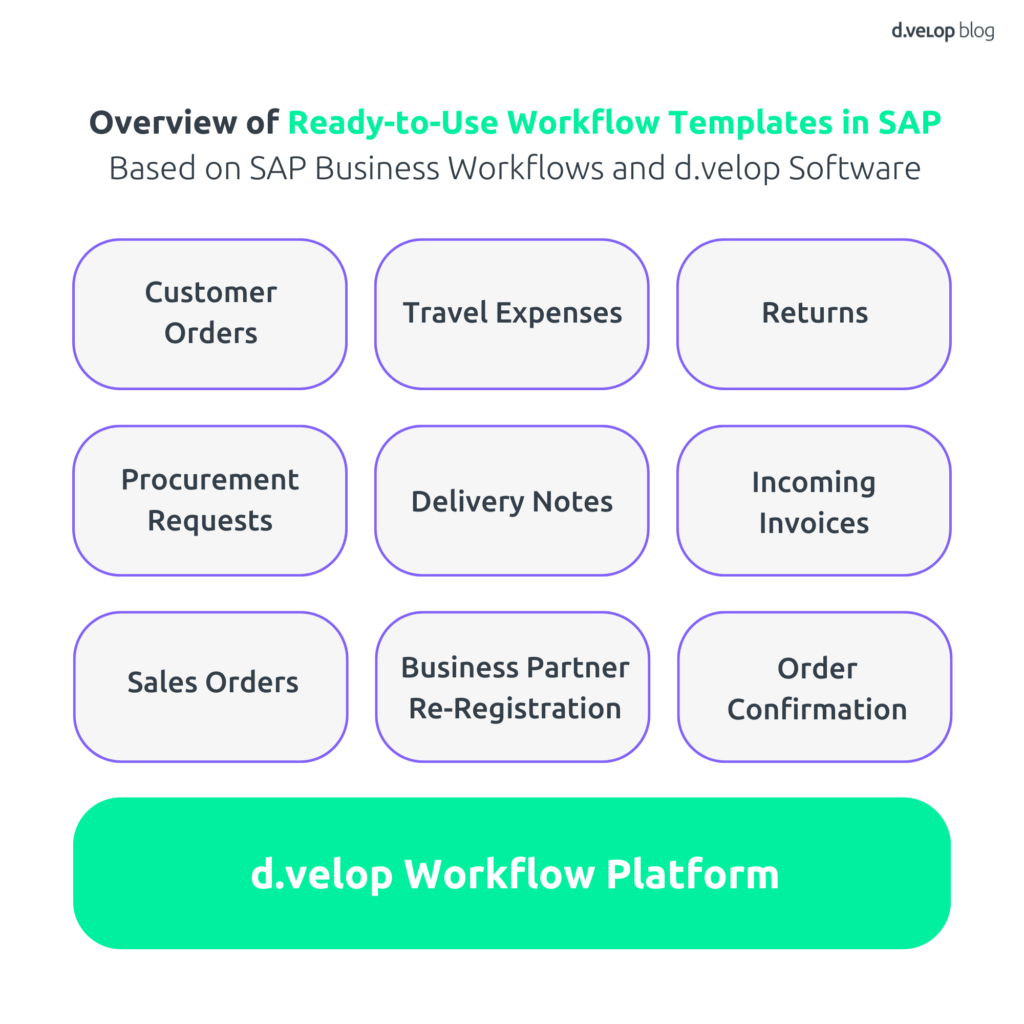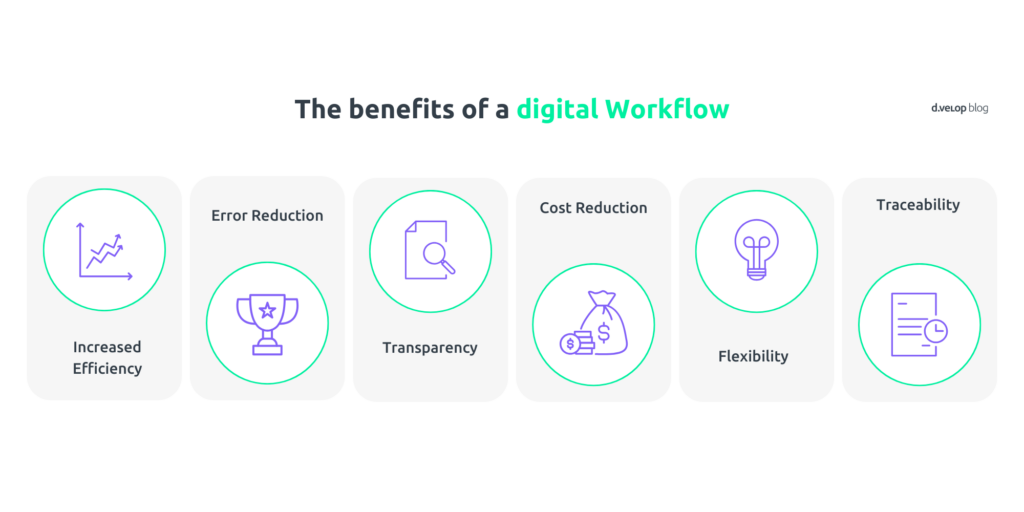SAP Business Workflow is a powerful SAP tool that makes day-to-day work much easier for users. This article takes a closer look at the significance of this tool. It also explains the advantages of using it in a way that is easy for anyone to understand, so that even readers without in-depth prior knowledge can grasp the potential and benefits of SAP Business Workflow.
What is meant by a “Workflow”?
A Workflow is a defined sequence of tasks and processes that are carried out either sequentially or in parallel to achieve a specific goal. Specific rules and conditions often automate and coordinate the individual operations to ensure efficiency and consistency.
What exactly is the SAP Business Workflow?
The SAP Business Workflow helps companies define and coordinate their individual processes. From basic approval procedures to complex business processes involving numerous departments, the SAP Business Workflow provides comprehensive support. It enables the design and execution of various business processes within the SAP environment. Not only can users extend the workflows provided by SAP, but they can also create custom workflows.
Why is SAP Business Workflow Needed?
SAP Business Workflow offers significant advantages, especially when used to manage recurring operational processes. It enables a high degree of automation for relevant tasks, helping to streamline workflows. In business processes that require multiple participants to complete tasks in a specific sequence, SAP Business Workflow can intelligently coordinate each step, reducing the overall process time as much as possible. Another application of this tool is in flagging errors or exceptions in other business processes and responding to them accordingly. When a predefined event occurs, it triggers the workflow.
The practical application of the SAP Business Workflow
Consider the following example: A customer complaint arrives at a company that doesn’t use SAP Business Workflow. What happens next? The employee handling the complaint fills out a form with the customer’s details as well as any internal information necessary to process the claim. In this case, the complaint is about goods that were delivered damaged.
Next, the logistics department investigates the issue and discusses liability with the courier for any transport damage, if applicable. Once they resolve the issue, they note it on the form and then forward it internally to the relevant department. Depending on the outcome, this might be the finance team, to issue a credit note, or the sales team, to communicate with the customer. The company circulates the form until it fully resolves the complaint and files it under the customer’s record. This process is tedious and opaque, despite the need for quick resolution in such cases.
The potential processing of a customer complaint with SAP Business Workflow
The employee registers the customer’s complaint directly in the SAP system. Using the predefined SAP Business Workflow, the relevant team members can immediately receive and handle the complaint internally for prompt resolution. This not only ensures that the complaint reaches the appropriate handlers in the correct order, but also provides pre-defined options and deadlines for processing. This significantly saves time and costs, while also enhancing transparency, as each participant in the workflow can check the current status of the process at any time.
In conclusion, utilising the SAP Business Workflow enhances process transparency and optimises communication among those involved. Additionally, access to documents is simplified, and administrative costs are reduced through automation.
The limits of using the SAP (Business) Workflow
The SAP Business Workflow is highly beneficial on its own, but it does have limitations. The functions within the SAP system restrict the options available for various workflow scenarios, limiting the ability to comprehensively depict certain documents and processes.
On the plus side, external software can expand the SAP Business Workflow. Numerous providers in the market offer products to digitalise business processes across a wide range of areas. From procurement processes and goods receipt procedures to financial accounting and approval processes, there are digital solutions for nearly every business process that can be integrated into SAP.
How does the integrated Software Solution work?
Each of these software solutions operates in a similar way but also displays noticeable differences. In most cases, developers build the software solution for digitalizing a specific process on the SAP workflow engine (the SAP Business Workflow). They use the SAP standard framework and enhance it with additional functionalities. For example, consider the classic digital invoice workflow process: a suitable software solution enables users to digitalise and, in some cases, automate the process steps that would typically remain manual in a traditional workflow. Depending on the software chosen, the entire process of pre-entry, verification, and approval of invoices can already take place within the SAP system. The software draws on the functions provided by the SAP Business Workflow and extends them.
A guide to automated procure-to-pay processes in SAP
Native Solutions from d.velop based on the SAP Business Workflow
d.velop offers native solutions within the SAP ERP R/3 & S/4 Hana system through a workflow platform based on the SAP Business Workflow. These solutions enable the seamless digitalisation of custom business processes and integrate individual steps with one another. Through numerous projects, d.velop has developed best-practice templates grounded in SAP Business Workflow technology to support optimal business process design.
You can manage the entire P2P process in separate stages—such as purchase requisitions, order confirmations, delivery notes, and incoming invoices—or link them as a complete series. Then, you can fully digitalise and execute this process through the SAP Business Workflow. Similarly, you can enhance O2C processes, which cover the digitalisation of customer orders and travel expenses, using this approach to improve efficiency.
These templates are ready to use. You can implement them individually, sequentially, or in combination:



 Your SAP electronic invoicing workflow fully digitalized
Your SAP electronic invoicing workflow fully digitalized